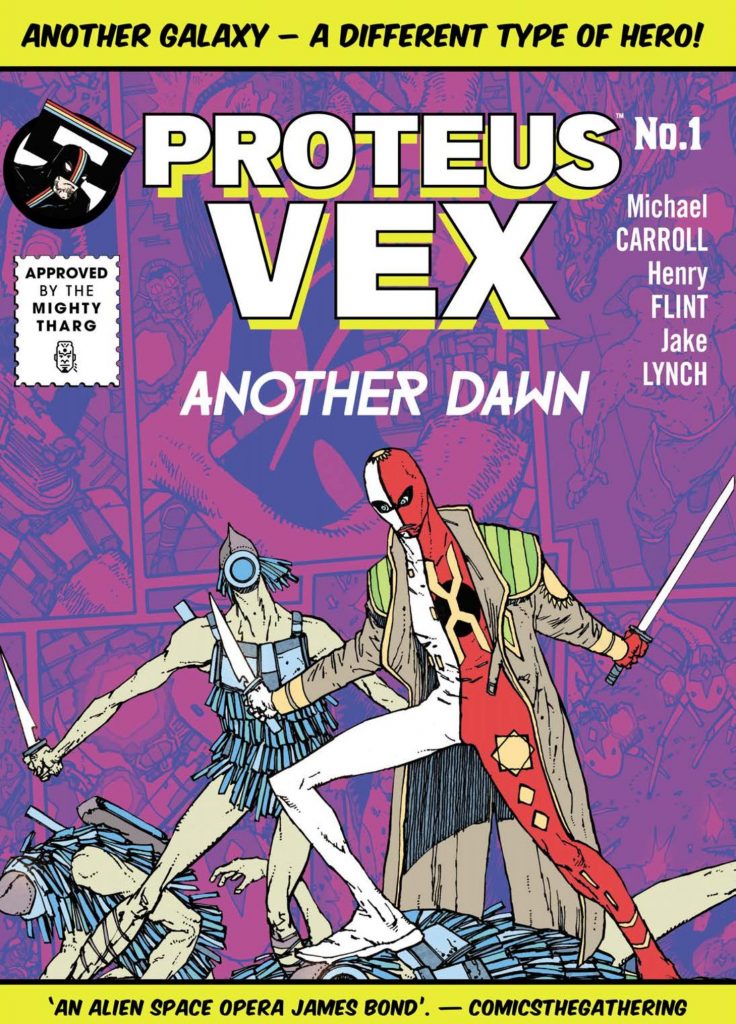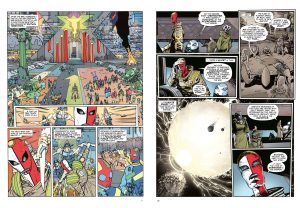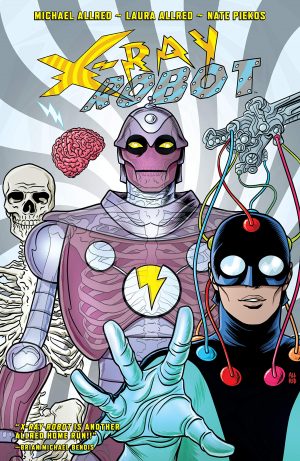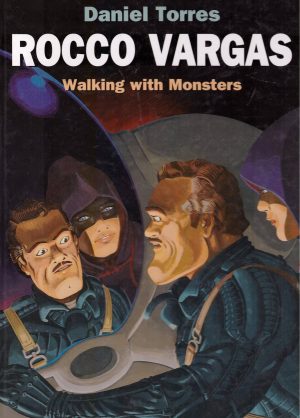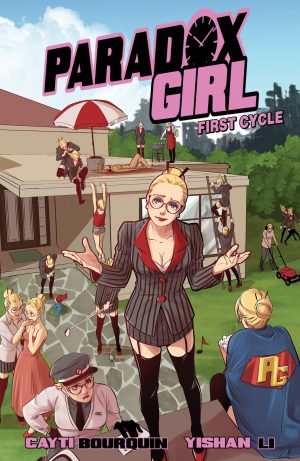Review by Karl Verhoven
Proteus Vex is an agent of the Imperium Ascendant, part of a now crumbling alliance who won an intergalactic war via the use of a terrible device. Forty years later resentment still festers on many planets. One of them is the war world where Vex tracks down the homing signal of a high ranking officer who’s gone missing, which may or may not be of his own accord.
Proteus Vex is all about the density. It’s there in the backstory and the wealth of new terms and concepts Michael Carroll throws at readers in the opening chapter, and in Henry Flint’s art, where clothing is complex, symbols adorn everything and there’s not a puddle too small to be drawn. There’s further density added via Carroll’s narrator relating events in hindsight, seemingly a considerable distance in the future, so offering the extra layer of the visuals occasionally contradicting the text to good effect. Yet despite that density there’s never a point where the reader paying attention can’t follow the gist of what’s happening in this intelligent story raising several ethical questions. “Some scholars argue that such stories are valid” leads into a lesser one: “They say that the legend of Proteus Vex is culturally more important than the facts.”
Carroll has been a consistently imaginative writer on Judge Dredd since 2011, and here provides a more complex form of science fiction against an equally well conceived backdrop, but this on his own creation. He introduces numerous alien races, almost all with their political agenda, and these are gloriously designed by Flint over the opening mission. Flint contributes so much, his whole approach essential in making this a unique strip, with some ghostly echoes of Jack Kirby about it.
Flint’s importance is seen in the second story, drawn by Jake Lynch, a very good artist who produces very good pages, but far more restrained and lacking the sheer bonkers exuberance of Flint’s earlier work. It reflects the contrast to be found between Mike McMahon and Brian Bolland both drawing Judge Dredd in the late 1970s.
The second story connects with the official subterfuge disclosed during the first, with Carroll continuing to funnel in interesting ideas by the crate, galaxy-wide organic communication being one. The deeper Vex digs, the dirtier the secrets uncovered, and as he does so, he builds a support crew. Carroll continues to make good use of the narrator speculating from years in the future, and while it’s still smart, it’s also far more straightforward SF adventure. In some ways it’s more polished than the first outing, and drops surprises and a great betrayal, but doesn’t quite have the visceral appeal. It does, though build to a worthwhile conclusion, more cerebral than action-led, and leaving the door open for another story. That would be very welcome.
